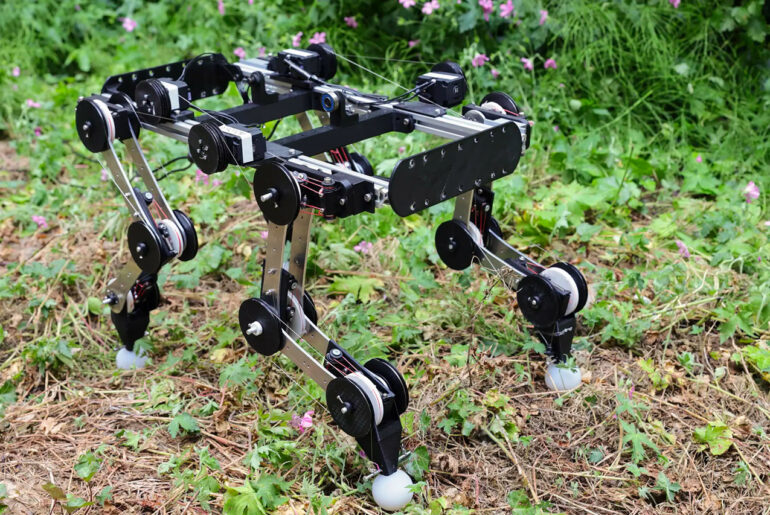
Photo credit: Herzog/EPFL
EPFL’s Computational Robot Design & Fabrication Lab (CREATE) engineers, led by Prof. Josie Hughes, have developed a bio-inspired robot dog that can run by itself once set in motion, without activating his motors. To achieve this, it has bilateral symmetry, where each of the robot’s four legs has three joints, and each joint is coordinated with the others.
Each of the robot’s legs having three joints enable the robot to run in the same way as a real dog. This prototype utilizes metal rods as the bones, 3D-printed pulleys as the joints, thin cables as the tendons and a few screws to hold everything together. A treadmill was purchased to test and see if it could run entirely on its own once set in motion, and they discovered that with the help of a counterweight, the robot automatically resumed its gallop.
- 🎁 Ideal Gift for Kids & Teens: This STEM solar robot kit celebrates child’s growing skills and important milestones. Whether for birthdays,...
- 📚 STEM Educational Toy: This solar educational toy brings science to life! The fun DIY building experience sparks children's curiosity in...
- ☀️ Powered by the Sun: Enjoy outdoor play with solar power or switch to a strong artificial light source indoors, such as a flashlight, ensuring...

I wanted to engineer a robot with animal characteristics, bearing in mind that animals – like humans – move in a huge variety of ways. But most of these movements are executed by just a few joints. We found a vast dataset on the motion of dogs, and it was even available in open source!,” said Mickaël Achkar, Engineer at EPFL’s Computational Robot Design & Fabrication Lab (CREATE).







